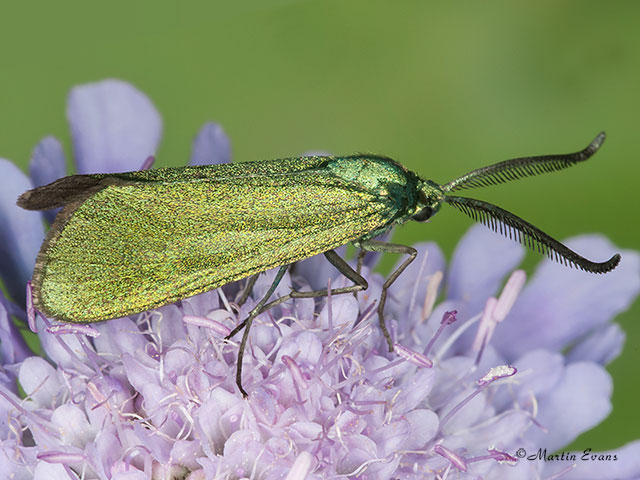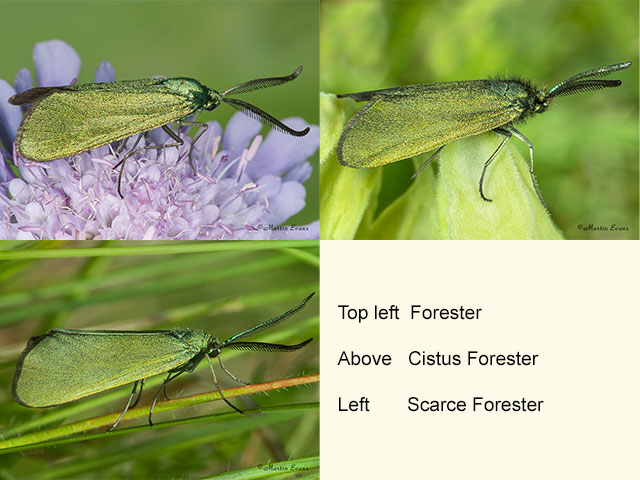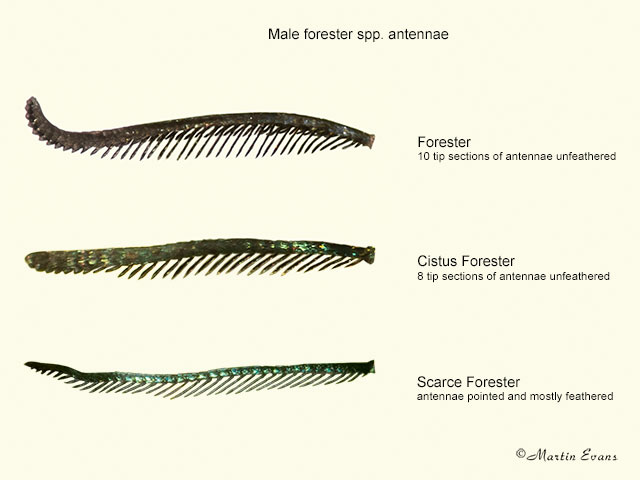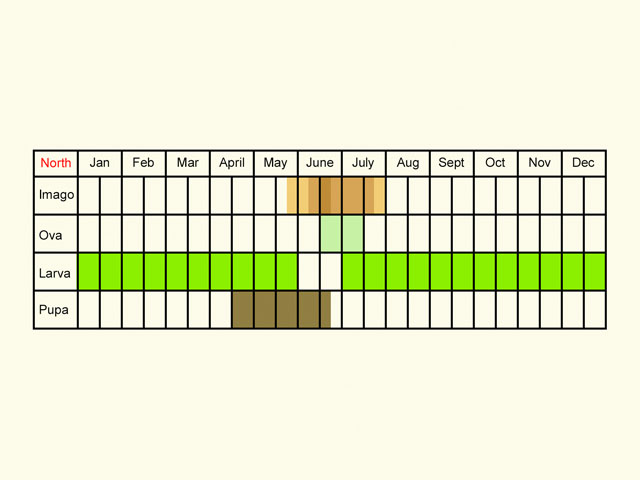Zygaenidae
54.002 Forester Adscita statices (Linnaeus, 1758)
Local
Similar species: Cistus Forester Adscita geryon is smaller (M 10 to 12mm, F 9 to 10mm). The males have 8 to 10 merged segments at the tip of the antennae. The females antennae thicken towards the tip. Scarce Forester Jordanita globulariae has broader, more rounded forewings. The males have 3 or less merged segments at the tip of the antennae. The females antennae are almost parallel sided and do not thicken towards the tip.
Forewing: M 12 to 15mm, F 11 to 13mm
Habitats: The habitat appears to be more to do with the presence of the foodplants than the pH of the soil. Calcareous downland and grasslands, damper neutral grassland, acid grassland, sandy heathland, stable sand-dunes, open woodland and woodland clearings.
Habits: The moth flies in sunshine and nectars at a wide variety of flowers. It mates in the afternoon and the male sometimes flies later in the evening and occasionally comes to light.
Foodplant: At first the larva forms a blotch mine on a leaf of Common Sorrel or Sheep's Sorrel, then after about a month it feeds on the underside of a leaf. It overwinters low down and feeds again in the spring until early May. It pupates concealed at soil level. In captivity it will also feed on Broad-leaved Dock.





